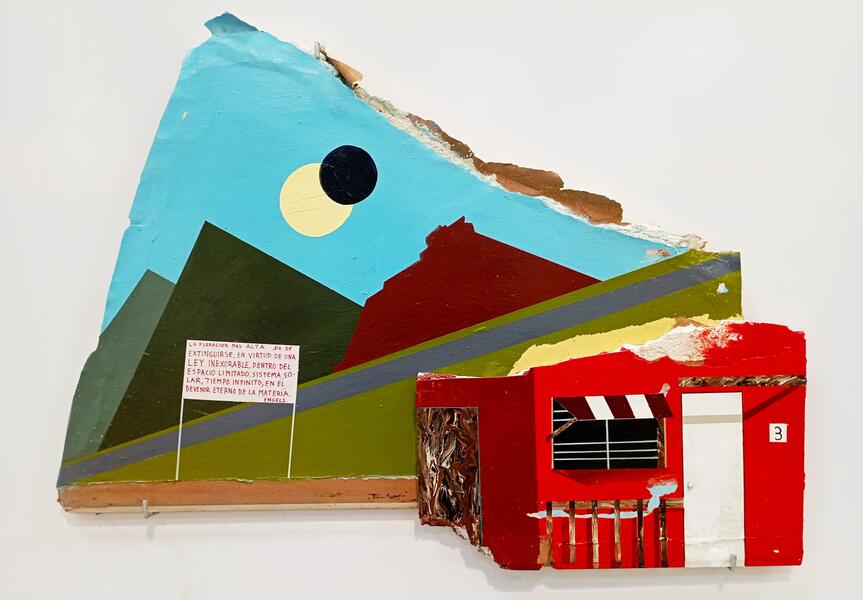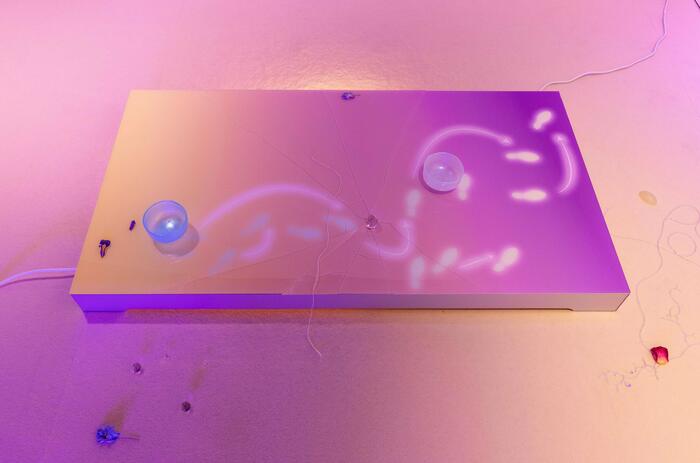16TH BIENNIAL OF LYON - MANIFESTO OF FRAGILITY
Conceived between a pandemic and a war in Europe, the 16th edition of the Biennale de Lyon "Manifesto of fragility", affirms fragility as intrinsically linked to a form of resistance initiated in the past, in tune with the present and capable of facing the future.

Imagined by curators Sam Bardaouil and Till Fellrath, as a collective statement made up of words, images, sounds and movements by 200 artists, giving a privileged place to those from the Middle East, from more than 40 countries and dispersed in 12 venues, it summons a set of resilient voices to propose a manifesto as a solution for a hopelessly fragile world.
Open to the world and the complex history of Lyon, the Biennale brings together works and objects created over nearly two millennia that evoke, each in its own way, the vulnerability of people and places, past and present, near and far. It is structured around three distinct but interconnected layers, within which fragility and resilience are explored respectively through the prism of the individual, the city and the world.
In the huge hangar of the Fagor Factory, the result is grandiloquent as the works are in fact highly narrative with underlying stories that are sometimes intimate and sometimes historical. It presents numerous monumental works such as the piece in elastic fabric and inflated balloons by Eva Fábregas (Spain); halfway between the human and the vegetable, these germinations oscillate between fragility and resistance. A little further on, José Dávila (Mexico), juggles between the stable and the precarious. His furniture and objects found in Lyon resist the forces of gravity thanks to rocks or concrete blocks that act as counterweights, the whole being held together by straps. Revelation of this biennale Sylvie Selig (France), born in 1941, the doyenne of this Biennale presents her universe of enchanted and creaky tales. A Weird Family of twenty-eight creatures, painted and embroidered canvases, and above all Stateless, a 50-meter-long fresco. We follow a young migrant girl, a hare and the lyrics of a Bob Dylan song. Moving forward in this labyrinth, we are challenged by the installation "Virgo" by Pedro Gómez-Egaña (Colombia), the interior of an apartment with a bedroom, kitchen and bathroom that he cut out. Through this staging, the artist invites us to rethink the spaces of everyday life, where the boundaries that separate disciplines such as mechanics, music, psychology and history, are the most problematic; he exhibits what, at first sight, seems to be autonomous systems that work harmoniously. How to live in such a place? One enters through a kind of reassuring yet unsettling tunnel; one does not know what room we are in. However, by revealing the devices that allow these systems to function, the artist shows the public the flaws in the machinery and the unsustainable trajectories it generates that precipitate the more global systems towards collapse.
Néstor Jiménez (Mexico) is interested in what surrounds him to better understand the history of the evolution of ideological landscapes, which we observe through the changes in living conditions in the urban periphery. In "Old Discipline" he examines the administrative and economic deterioration of the Mexican labor system after the introduction of the neoliberal model of the 1980s. Dominated by dark shadows, evoking the atrophy and monotony of the worker, his installation is a metaphor for human suffering. In his artistic approach, Daniel Otero Torres (Colombia) questions how multidirectional migrations –of people, animals, knowledge systems– across hemispheres, cultures and histories, enrich our world in countless ways of perceiving reality. At the end of the tour Hans Op de Beeck (Belgium) occupies an entire ship with an entirely grey immersive installation; resembling an abandoned campsite under a layer of ashes reminiscent of the ecological disasters we see more and more. As a ghost town it can be perceived as a memento mori that evokes the vanity of human existence.
Another exhibition venue, the former Guimet Museum hosts a series of works related to ethnology and living beings, such as the monumental installation by Ugo Schiavi (France) "Grafted Memory System", a hybrid landscape, both mechanical and natural where plants and computers escape from their glass cages like an archeology of the future; and the work of Daniel de Paula (Brazil) who imagines a video and sculptural installation in dialogue with a Roman funerary mask. Leyla Cárdenas (Colombia) recreates the façade of the Guimet Museum that evokes its tragic struggle, that of an empty museum that has nothing more to show than its abandonment. These vestiges reappear in her work in the form of spectral images attached to stretched and frayed canvases. Cárdenas invites these archaeological remains to reinvest the collective consciousness as cultural and physical signs of the past and clues to the future that awaits contemporary civilizations.
At MACLyon, the Biennial's section entitled "Beirut and the Golden Sixties" revisits a rich and fascinating but little-known period of artistic production and political engagement in Beirut; it reviews a dazzling and perplexing chapter in the development of modernism, between the Lebanese crisis of 1958 and the outbreak of Lebanon's civil war in 1975. With more than 230 works of art by 34 artists and 300 archival documents from more than 40 private collections, it opens up new perspectives on a crucial period in Beirut's history. Notable is the installation by visual filmmaking duo Joana Hadjithomas and Khalil Joreige who made an incredibly powerful montage around the August 2020 explosion titled "Where is My Mind."
It is evident to detect throughout the Biennale, the process of judging, constructing and destroying codes by the artists. Taking possession of the different spaces, they show us a landscape built by an overload of images fragilized by an ecosystem that naturally imposes itself on the visitor as he moves forward; transformed into an actor, the only thing left to do is to wander through this uncertain labyrinth of different aesthetics and surprising plastic utopias. Within an archipelago of works that are successively scenes or stops that lead the passerby to slow down, the Biennial proposes a landscape in transition, a wide variety of positions that help build a nuanced mosaic of narratives to which artists, particularly sensitive to social, political, economic and environmental impacts, are eager to respond.







